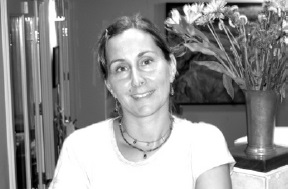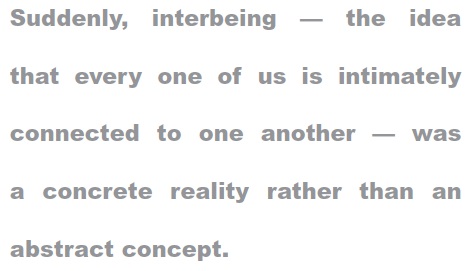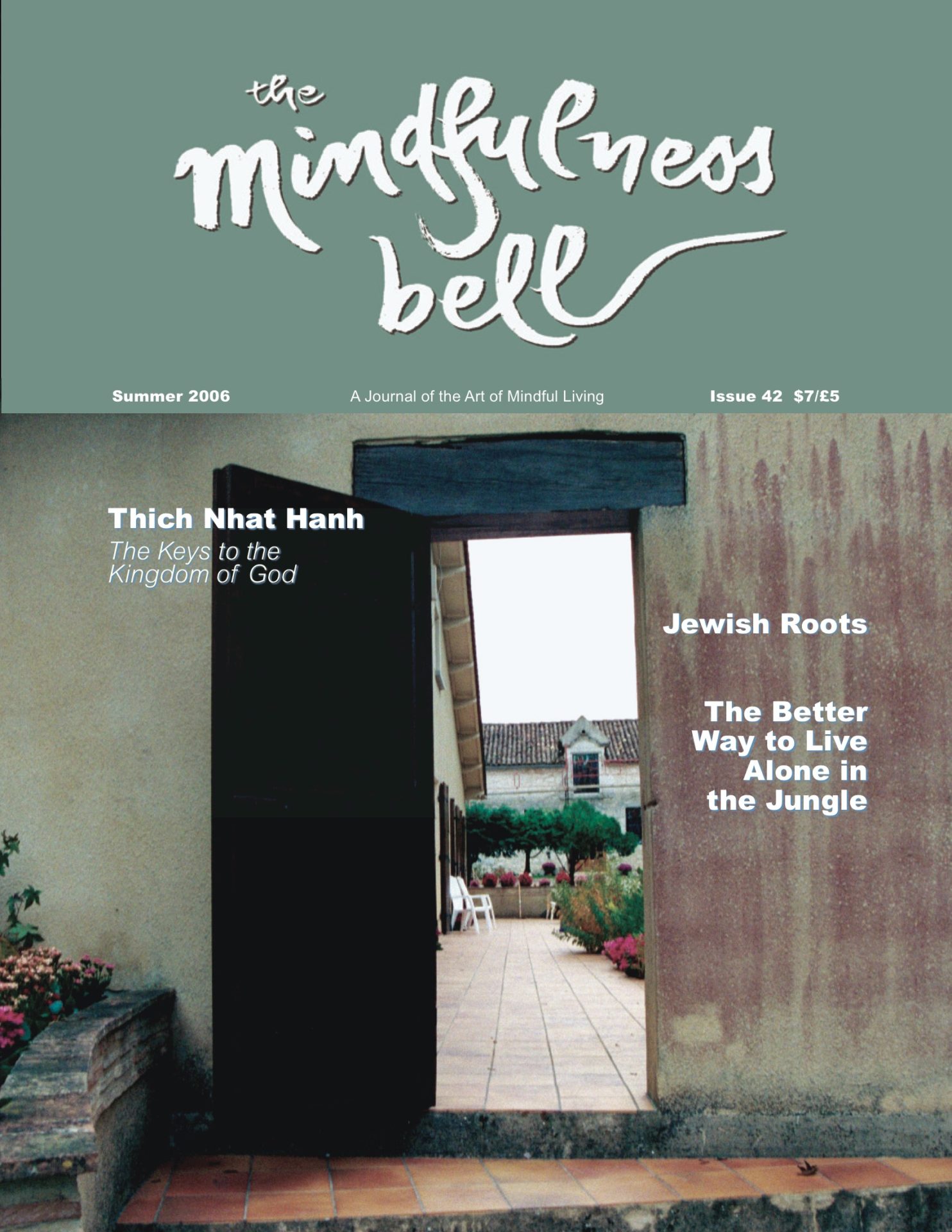
By Annie Mahon
When I took refuge in the Buddha, the Dharma, and the Sangha many years ago, I was given the dharma name “Joyful Purpose of the Heart.” At the time I didn’t think much about it. Frankly, the name didn’t mean much to me. Joyful Purpose? I had no idea what my joyful purpose might be. I had been practicing mindfulness in a personal way, meditating by myself and reading books on mindfulness.

By Annie Mahon
When I took refuge in the Buddha, the Dharma, and the Sangha many years ago, I was given the dharma name “Joyful Purpose of the Heart.” At the time I didn’t think much about it. Frankly, the name didn’t mean much to me. Joyful Purpose? I had no idea what my joyful purpose might be. I had been practicing mindfulness in a personal way, meditating by myself and reading books on mindfulness. As a result, my life had been changing slowly. For example, I found myself having more patience for my kids and a sense of calm inside myself. But I did not feel there was any purpose to my life. I was living life aimlessly.
After the events of September 11, everything changed. As I listened to the coverage of the crashes, I felt a sense of compassion and courage growing inside of me. Suddenly, interbeing—the idea that every one of us is intimately connected to one another—was a concrete reality rather than an abstract concept.

My own need for Sangha surfaced as I sought the support of other people who could see the interbeing in this event and find the connection between the victims and the terrorists. I began to sit regularly with the Stillwater Mindfulness Group in Maryland. I needed the support of other people for my growing mindfulness and to be in an emotionally safe place. By joining fully in the Sangha, I made the decision that mindfulness was my life path, and I began to live from this foundation.
Around the same time I began to understand that living life aimlessly was not about living with no aim, but rather about living without attachment to the outcome of our actions. In the
Bhagavad-Gita, Krishna tells Arjuna, “Do thy work in the peace of yoga and, free from selfish desires, be not moved in success or in failure… In the bonds of works I am free, because in them I am free from desires.” I began to think that it might be okay to express my creativity through my work and even to do it with joy.
Teaching Peace
I knew there was something I could do to transform the growing anger and mutual misunderstanding that led to the events of September 11. I had a talent for teaching children, and my study and practice of mindfulness and my relationship with Thay gave me insights into peace and conflict resolution.
On September 14, I sent an e-mail to Coleman McCarthy, a former Washington Post columnist turned peace activist, asking how I could get involved in teaching peace and conflict resolution in the Washington, D.C. public schools. His organization got me in touch with Marsha Blakeway who works with the public schools’ peer mediation and conflict resolution programs. Marsha happily became my peace mentor, and I immediately began to assist her with peer mediation meetings at Alice Deal Junior High.
I also contacted my son’s third grade teacher and asked if she would be interested in having me teach a weekly conflict resolution class. I had no experience in this area, but I had books and I had my new mentor and I had my mindfulness practice. With these tools I was able to fabricate a wonderful class in which I used games, literature, discussion, and dramatization to help third graders learn how to resolve disputes peacefully.
At the end of my first month of teaching, I was approached by another third grade teacher to teach in her classroom. During the first year, I often wondered whether the kids were getting anything out of the class. Then one day, my son had a friend over to visit. Both of them were in my conflict class at the time. When my son did something that irritated me, I began to scold him. His friend said, “Annie, use your ‘I’ language.” I had taught them to do this in our conflict class, and he not only remembered it, but also applied it to real life. After that, I worried much less about the impact of my teaching.
Making Little Yoginis
In the fall of 2002, I saw a notice for a program training people how to teach yoga to kids. I had long been a yogini and had experience in the connection between the mind and the body. Kids especially live in and through their bodies and their ability to stay centered depends on this connection. As we teach children how to think rationally, they begin to lose this grounding, and I think this can cause children—and adults—to become physically and mentally ill.
During the last day of the training, I was asked to teach a free yoga class for children with two of my fellow students. We gave a forty-five minute class to seven kids, ages eight to twelve. What surprised me was that the students liked the relaxation part of class best. These kids really needed the time and space to relax. They are often busy all day at school and afterwards with activities, and then they usually watch TV or use the computer.
After the training, I approached the owner of a small exercise studio where I took classes and asked if I could teach a yoga class for kids. They were happy to try it. I also decided to offer an after-school class at the local elementary school. That class was so popular I ended up offering two classes after school, each class filled with twelve students.
After a while I realized that part of the experience for kids was having a kid-friendly, aesthetically pleasing space. So I decided to open a yoga studio for kids. In March, 2003 I opened Budding Yogis, Mindful Yoga Studio for Kids.
A Mindful Business
My practice is to stay open to what the world, my students, and coworkers need; to express my creativity without becoming attached to the outcome; to create a space for myself and the community; and to remember that the connections—interbeing—are what matter. The business supports the vision.
At long last my dharma name begins to make sense. Now I understand what it means to have—to be—Joyful Purpose of the Heart.
Annie Mahon, Joyful Purpose of the Heart, practices with the Stillwater Mindfulness Practice Center in Silver Spring, Maryland. She has four wonderful and sometimes stressed-out children of her own.
From: Spoken Like a True Buddha, an unpublished compilation of stories about mindfulness practice in everyday life, edited by Carolyn Cleveland Schena and Sharron Mendel.

